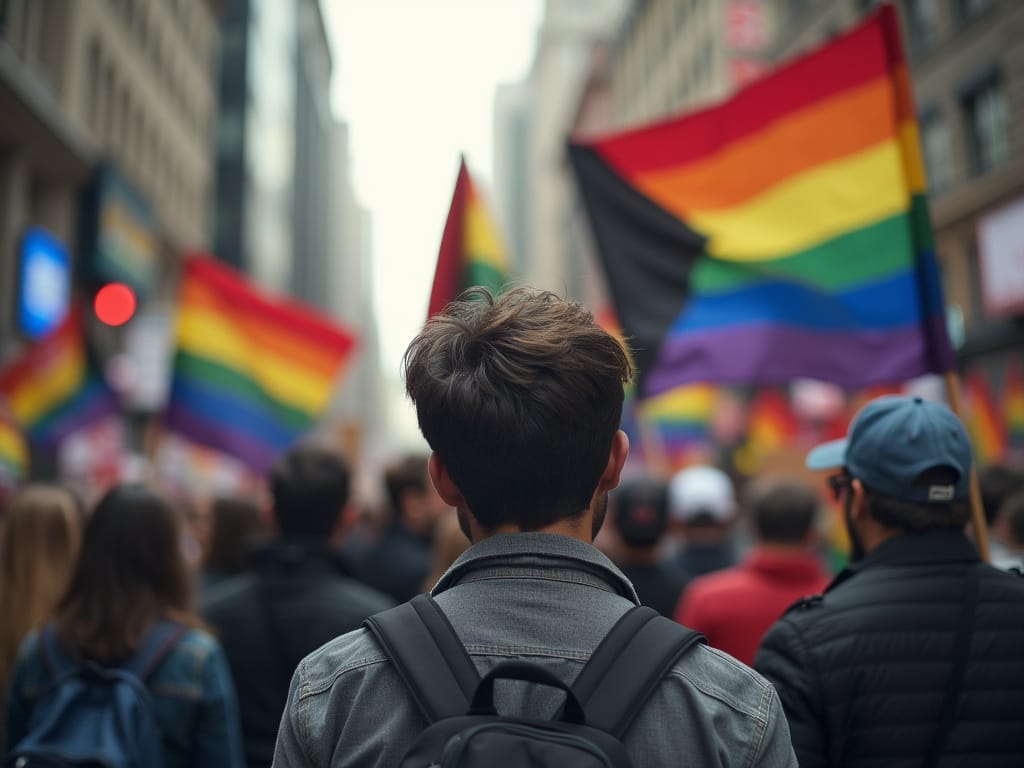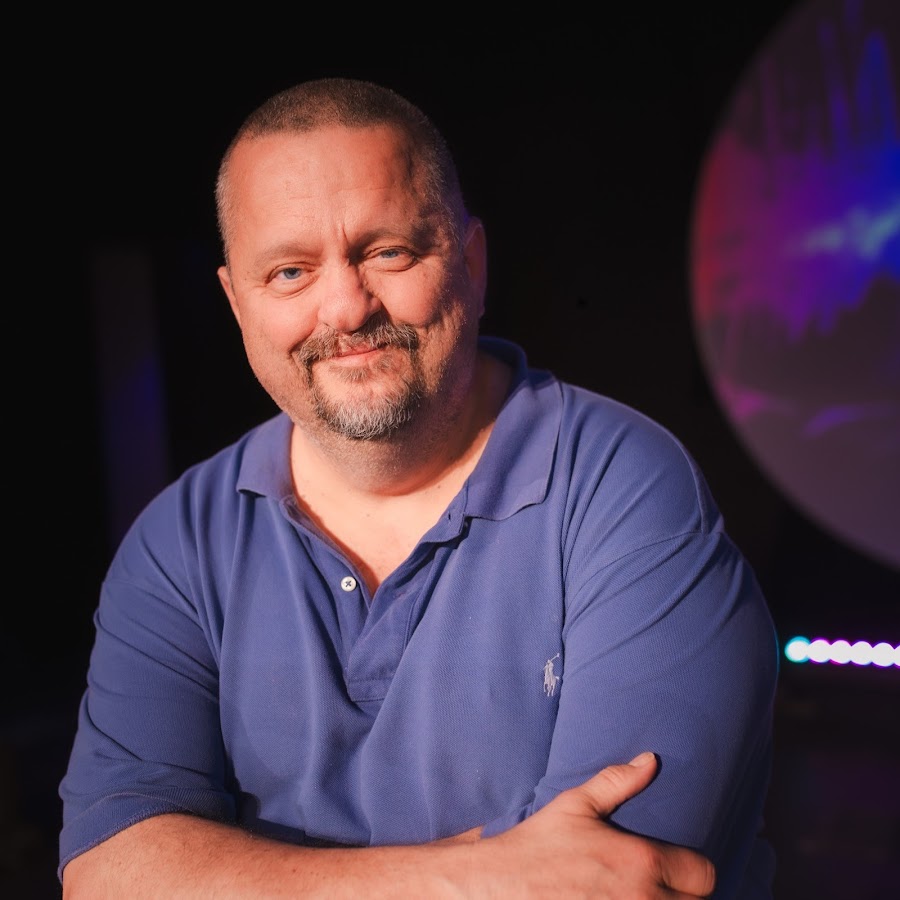

By Dr. Tim Orr
In recent years, a perplexing alliance has formed between segments of the LGBTQ+ community and pro-Palestinian movements, including support for Gaza and even Hamas—an organization whose policies severely restrict LGBTQ+ rights. How did a community that prides itself on advocating for equality and freedom align with a cause that suppresses sexual minorities, and how did this shift lead to a rise in antisemitism within these activist spaces? This article unpacks the historical, social, and ideological forces that have shaped this alliance, providing a deeper look into the intersection of queer theory, intersectionality, and the Israeli-Palestinian conflict. Understanding these dynamics is crucial for anyone interested in how modern activism strays from its core values—and why this particular issue deserves more critical scrutiny.
The Shared Struggles of Jews and LGBTQ+ Communities
Historically, there was a natural solidarity between Jews and LGBTQ+ people, particularly in Europe during the early 20th century. Magnus Hirschfeld, a Jewish physician and sexologist, played a key role in advocating for gay rights and researching sexual orientation. His Berlin-based Institute for Sexual Science became one of the first hubs for LGBTQ+ activism until the Nazis destroyed it. Hirschfeld’s life serves as an early testament to the fact that both Jews and gay people faced persecution by the same oppressive forces. The Nazi regime’s targeting of both groups is part of what bonded these marginalized communities, as they faced a common enemy bent on their eradication.
The symbolism of the pink triangle, initially used by the Nazis to mark homosexuals in concentration camps, was later reclaimed by the LGBTQ+ community, becoming an emblem of solidarity during the 1980s AIDS crisis. This reclamation reflects how, at that time, there was a shared understanding between Jews and gay communities: both had been on the receiving end of deep-seated hatred. LGBTQ+ activists would wear the pink triangle with pride during protests in cities like New York, Chicago, and San Francisco, as they stood shoulder-to-shoulder with Jewish allies, invoking the memory of what they saw as their shared suffering under Nazi persecution to fight for civil rights in modern times.
The Rise of Critical Theory and a Shifting Narrative
The shift toward anti-Zionism within LGBTQ+ spaces is a recent phenomenon, largely fueled by the rise of Critical Race Theory (CRT), intersectionality, and queer theory. Originally, these frameworks were designed to give voice to individuals who face multiple layers of oppression. Kimberlé Crenshaw, for instance, coined the term "intersectionality" to describe how being Black and female presents unique forms of discrimination. However, this framework quickly expanded beyond its original scope. It became a lens through which social movements—such as Black Lives Matter and the Palestinian cause—were analyzed as part of a broader global struggle between the oppressed and the oppressor.
Angela Davis, a major figure in leftist activism, played a significant role in applying this binary narrative to the Israeli-Palestinian conflict. In her book Freedom Is a Constant Struggle, Davis draws direct comparisons between the struggles of Black Americans and Palestinians, casting Israel in the role of oppressor. This simplified framework has since permeated LGBTQ+ activist spaces, where Israel is now often portrayed as part of a global white supremacist system, with Palestinians representing the oppressed. For example, during a 2017 LGBTQ+ conference in Chicago, organizers blocked the participation of Jewish groups unless they denounced Israel, illustrating how deeply these ideological shifts have taken root.
The historical persecution of Jews and the diversity within Israeli society, where over half of the Jewish population descends from Middle Eastern and North African countries, is often conveniently ignored. The shift from individual intersectionality to broad-stroke activism has contributed to this dangerous oversimplification. Mizrahi Jews, who have fled persecution in Arab countries, find themselves erased in these narratives, even as they form the backbone of Israeli society, with their experiences of displacement and oppression echoing that of many other non-Western refugee populations.
Pinkwashing: The Weaponization of LGBTQ+ Rights
One of the more insidious aspects of anti-Zionism within queer activism is the concept of “pinkwashing.” This term is used to argue that Israel touts its progressive LGBTQ+ rights record as a distraction from its alleged human rights abuses against Palestinians. The pinkwashing narrative has taken hold in queer activist circles, despite Israel being the only country in the Middle East where LGBTQ+ people can live openly and safely. It is not uncommon to see anti-Zionist protesters at Pride events in the U.S. and Europe, waving signs that accuse Israel of using LGBTQ+ rights as a public relations tool to cover up its so-called apartheid state.
Tel Aviv’s Pride Parade, which attracts over 250,000 people annually, is a vibrant celebration of LGBTQ+ rights. However, according to pinkwashing proponents, Israel’s support for LGBTQ+ rights is not a legitimate aspect of its democratic society; rather, it's framed as a cynical ploy to divert attention from the Israeli-Palestinian conflict. What these activists overlook, Blackmer argues, is the reality of the Middle East, where, in contrast to Israel’s openness, LGBTQ+ individuals in neighboring countries face severe repression. The juxtaposition between Tel Aviv’s lively, rainbow-clad Pride Parade and the stark realities faced by LGBTQ+ people just miles away in Gaza and the West Bank underscores the absurdity of the pinkwashing accusation.
This argument becomes especially egregious when you consider the reality faced by LGBTQ+ Palestinians. In Gaza, same-sex relations are punishable by death under Hamas law. In the West Bank, governed by the Palestinian Authority, LGBTQ+ individuals face discrimination, violence, and even honor killings. Blackmer recounts the tragic story of Ahmad Abu Maria, a gay Palestinian man who sought asylum in Israel after receiving death threats in the West Bank. He was later kidnapped and beheaded after being returned to the West Bank. His story exemplifies the dangers queer Palestinians face, dangers largely ignored by those accusing Israel of pinkwashing. The fact that Ahmad fled to Tel Aviv—the only haven for LGBTQ+ people in the region—speaks volumes about the stark difference in policies and realities for queer individuals on both sides of the Israeli-Palestinian conflict.
The Irony of Queers for Palestine
Blackmer draws attention to the sheer irony of groups like Queers for Palestine. Members of these groups, primarily Western LGBTQ+ activists, show solidarity with Palestine, seemingly unaware of the brutal realities LGBTQ+ people face in Palestinian territories. If these same activists were to travel to Gaza or the West Bank and openly identify as queer, they would likely face arrest or worse. This paradox becomes even more apparent when Western LGBTQ+ activists, who enjoy immense freedoms and protections, wave Palestinian flags at Pride marches, unaware that their very existence would be criminalized in the lands they claim to support.
The absurdity of this stance became especially evident when activists invited George Floyd’s family to Palestine in 2020, attempting to draw a parallel between the Black Lives Matter movement and the Palestinian struggle. A mural of George Floyd was painted on the Israeli West Bank barrier, with the words “I can’t breathe” scrawled beneath it, suggesting a direct link between Floyd’s death and Palestinian suffering. Blackmer views this as a gross oversimplification, reducing both the African American and Palestinian experiences to a tidy, binary narrative of victims and oppressors. This incident further illustrates the trend within intersectional activism of erasing critical distinctions in favor of convenient, pre-packaged narratives that fit neatly into existing political frameworks.
This kind of rhetoric flourishes in LGBTQ+ activist spaces, where black-and-white thinking reigns supreme, and the complexities of the Israeli-Palestinian conflict are often overlooked in favor of simplistic narratives. For example, in a 2019 university panel on queer identities in the Middle East, a speaker from a prominent LGBTQ+ advocacy group dismissed Israel’s LGBTQ+ rights as “part of its colonial agenda,” completely ignoring the harsh realities faced by LGBTQ+ people under Hamas rule in Gaza.
LGBTQ+ Palestinians: The Silent Victims
While queer activists in the West rally behind the Palestinian cause, the voices of LGBTQ+ Palestinians themselves are often drowned out. As Blackmer notes, many queer Palestinians flee their communities and seek refuge in Israel, where they can live openly as gay or transgender individuals. In Tel Aviv, an estimated 2,000 to 3,000 LGBTQ+ Palestinians live, often in fear of being discovered by their families or deported back to Palestinian territories, where they would face severe punishment. The harsh reality is that these individuals exist in a state of limbo—accepted by neither Palestinian society nor fully embraced by the Israeli government, living under constant threat of deportation or familial violence.
Yet even in Israel, their existence is fraught with tension. LGBTQ+ Palestinians often face suspicion from Israeli authorities, who worry that they may be posing as asylum seekers while harboring terrorist intentions. The fear of deportation hangs over many of these individuals, making their lives precarious even in a country that offers them greater freedoms. One such story involved a gay Palestinian man named Yusuf, who fled to Tel Aviv after his family threatened to kill him. Although he found some measure of safety, he remained constantly on guard, unsure if the Israeli police would one day deport him back to the West Bank, where his life would be in immediate danger.
University Activism and the Spread of Anti-Zionism
The rise of anti-Zionism within LGBTQ+ spaces has been particularly visible on university campuses, where students are often introduced to intersectional activism through women's and ethnic studies programs. Many LGBTQ+ students come to campus seeking a sense of community after facing rejection or isolation at home. Pro-BDS (Boycott, Divestment, and Sanctions) groups offer this sense of belonging, framing themselves as champions of social justice. The allure of inclusion and the promise of solidarity with oppressed peoples make these movements particularly appealing to students who may feel marginalized themselves.
But as Blackmer highlights, many of these students are woefully uninformed about the complexities of the Israeli-Palestinian conflict. They are often unaware of Israel's record on LGBTQ+ rights or the brutal realities faced by queer Palestinians under Hamas and the Palestinian Authority. Instead, they are drawn into a narrative that casts Israel as an oppressor and Palestinians as victims, ignoring the contradictions inherent in this framework. In one instance, a pro-BDS group on a major U.S. campus distributed flyers during Pride Week that celebrated Palestinian “resilience” yet made no mention of the criminalization of homosexuality in Gaza. These oversights reveal a broader trend of selective outrage that overlooks inconvenient truths.
Conclusion: The Need for Education and Critical Engagement
For Blackmer, the solution to this troubling trend is education. The once-clear distinction between anti-Zionism and antisemitism has largely disappeared, and this conflation has dangerous implications. LGBTQ+ communities must be made aware of the complexities of the Israeli-Palestinian conflict, and they must critically engage with the realities of life for queer people in both Israel and Palestinian territories. Activists who advocate for Palestinian rights must grapple with the fact that the very individuals they claim to champion—queer Palestinians—often flee to Israel for safety.
Blackmer argues that education is crucial for breaking through the simplistic narratives that dominate LGBTQ+ activism today. By equipping activists with a more nuanced understanding of the conflict, the LGBTQ+ community can resist falling prey to the distortions of pinkwashing and anti-Zionist propaganda. As she has observed through her teaching and public engagements, once students and activists are confronted with the fuller picture, their rigid, ideological frameworks often begin to soften, allowing for more thoughtful and compassionate engagement with these complex issues.
Reference
Information in this article was drawn from the YouTube lecture below. It appears on the YouTube channel for the Institute for the Study of Contemporary Antisemitism (ISCA) located at Indiana University. https://www.youtube.com/@ISCAIndianaUniversit
ISCA Indiana University. (2023, December 11). Queer anti-Zionism: Antisemitism in LGBTQ communities then and now [Video]. YouTube. https://www.youtube.com/watch?v=PEgE927q9Gg
Tim Orr is a scholar, Evangelical minister, conference speaker, and interfaith consultant with over 30 years of experience in cross-cultural ministry. He holds six degrees, including a master’s in Islamic studies from the Islamic College in London. Tim taught Religious Studies for 15 years at Indiana University Columbus and is now a Congregations and Polarization Project research associate at the Center for the Study of Religion and American Culture at Indiana University Indianapolis. He has spoken at universities, including Oxford University, the University of Tehran, and mosques throughout the U.K. His research focuses on American Evangelicalism, Islamic antisemitism, and Islamic feminism, and he has published widely, including articles in Islamic peer-reviewed journals and three books.
 YouTube
YouTube
Sign up for Dr. Tim Orr's Blog
Dr. Tim Orr isn't just your average academic—he's a passionate advocate for interreligious dialogue, a seasoned academic, and an ordained Evangelical minister with a unique vision.
No spam. Unsubscribe anytime.
